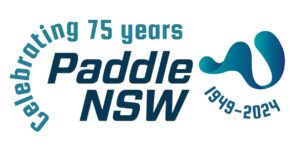The last census. A massive failure in modern communications technology, but necessary nonetheless. It has provided a new set of statistics to compare old habits with new.
What it has failed to provide are statistics on how many paddlers we have in NSW, and how often they paddle. What age are they, why do they paddle and where?
I was recently asked these very questions by NSW Maritime, and i wish I had the answers. While I’m guessing at numbers. legislation and safety strategies are being based on many assumptions about paddler statistics, but few facts.
In years past, a survey of sporting activity called ERASS provided some basic statistics for us to work with. However these statistics are now by and large out of date.
As the State paddlesports association, we can provide statistics about our own activities in minute detail, but our members account for only a small portion of State paddlers.
Other contributors to the paddling population include NSW Sea Kayak Club, Surf Lifesaving paddlers, non-member competitive paddlers (river, multisport and ocean paddlers), schools, meetup groups, kayak fishers, boat hire clients and the vast numbers of sit-on-top owners who may paddle occasionally.
If we had a means of gathering paddler statistics, we would have a much better chance to influence Maritime legislation, urban planning including access to water, and many other side benefits such as financial support.
The annual bird count provides very accurate statistics on bird populations in the city. Every bird in the local area is counted on one common 15 minute period by volunteers. We could gather paddler statistics in a similar way.
Perhaps one day a year (or maybe one day a season), paddlers could count the number and type of paddlecraft in their local area at a particular time and provide a rough indication of paddlecraft use.
It has been estimated that in Victoria alone, there were 4 million paddlecraft journeys undertaken last year, while at the same time the average number of deaths by drowning from a paddlecraft was 1.4. (averaged as 14 deaths in the preceding 10 years). They are not bad statistics. This compares with 3.2 million journeys by powered craft, and far more deaths by drowning.
For experienced paddlers, ours is a relatively safe sport. We generally self-manage our risk because we are aware of these risks. Given that notion, statistics could be used to focus the safety message where it is needed most, the novice paddler. But without statistics, we are all being subject to a common legislation that does not account for the vast differences in experience and ability in the paddling community.
So, would a survey work? Just putting it out there!
Tony Hystek – PaddleNSW Chairperson






